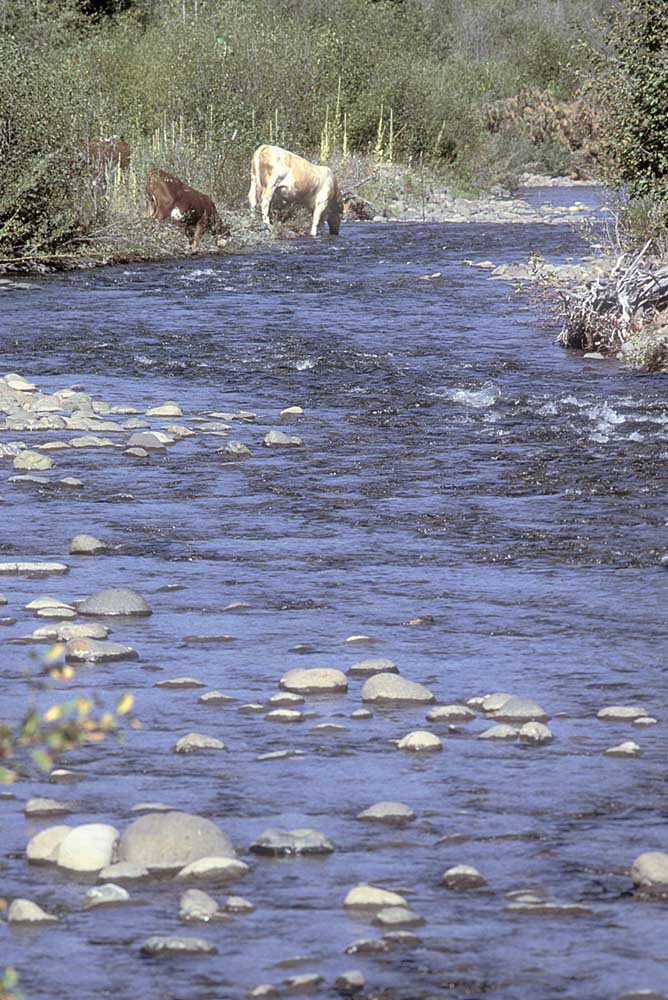Research helps better understand grazing near streams
Published 12:34 pm Tuesday, January 17, 2017

- A cow and calf drink from Catherine Creek in Union County. Using GPS tracking collars over five grazing seasons on federal land, researchers determined cows spend 1 to 2.5 percent of their time in streams.
Environmental groups say cattle grazing on public rangeland trample and erode streambanks and pollute water.
But a five-year study of cattle grazing conducted by Oregon State University shows cattle spend only 1 to 2.5 percent of their time in streams or buffer areas. And rather than ranging up and down the length of steams in allotments, cattle used only 10 to 25 percent of the available stream area.
Trending
The cows typically did not rest or graze near streams. Instead, they spent most of their time grazing on higher ground or resting in dry areas away from streams.
John Williams, an OSU Extension rangeland expert in Wallowa County, said cows enter riparian areas for two reasons: “One is to drink, the other is to cross.”
The study was done on a tight budget. Researchers built their own GPS collars, which generated location data every five minutes. They attached the collars to 10 cows in three different herds.
Over the course of five years they collected 3.75 million data points.
That data show that animals behave differently at different points in the grazing season. And that, Williams says, suggests that producers could use such data to increase the efficiency of their operations.
The findings are potentially significant.
Trending
Now we know that cattle probably don’t cause as much damage to streams and riparian areas as popularly thought, and it’s possible to use real data to reduce damage further by better management.
The study shows the value of testing assumptions, and using what’s learned to make things better.
We encourage OSU to continue this line of inquiry, and for all parties to take note.








